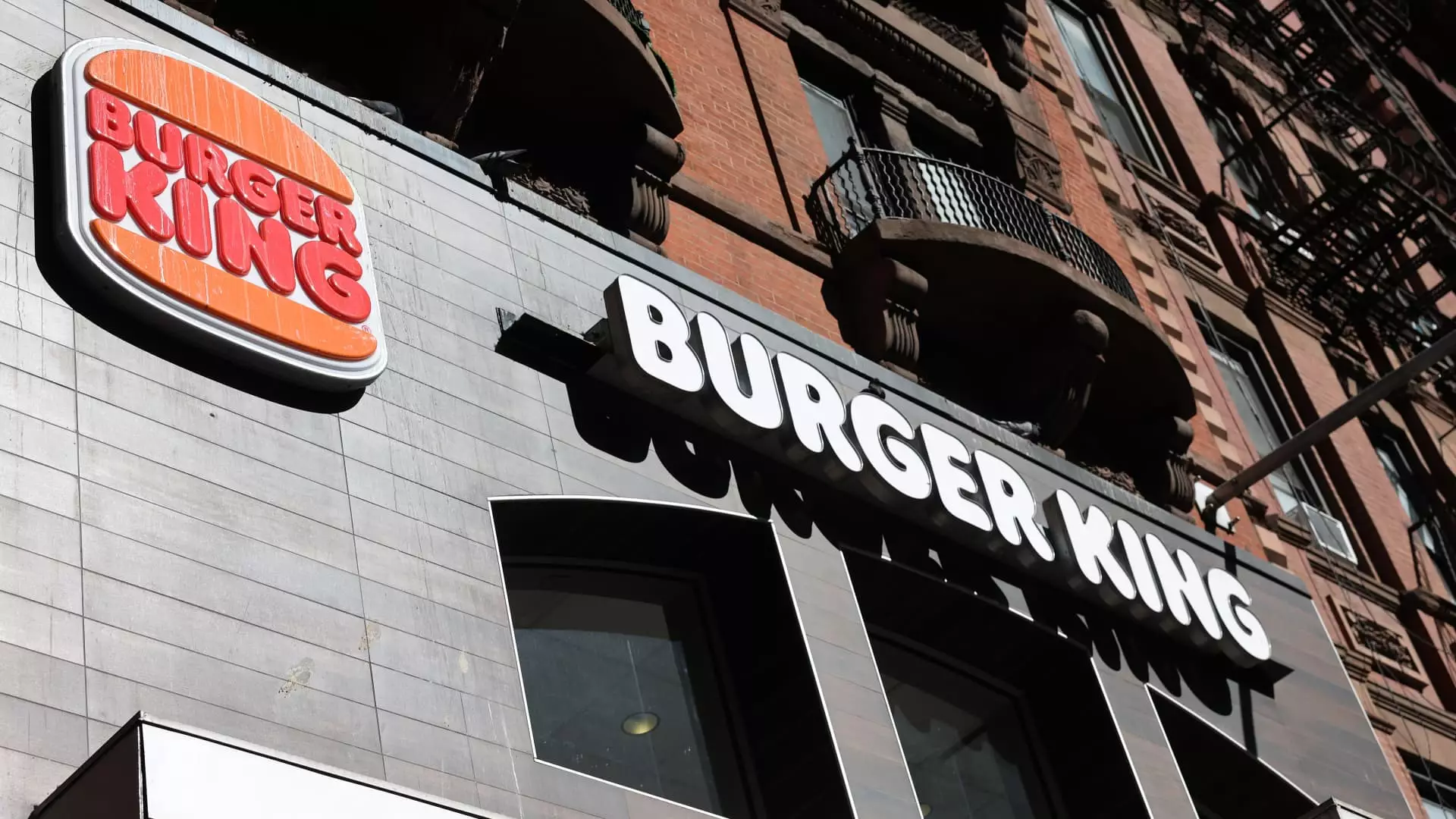Restaurant Brands International (RBI) has found itself in troubled waters after reporting disheartening quarterly earnings that fell below analysts’ predictions. The buzz around Popeyes, Burger King, and Tim Hortons has faded, and the results are glaringly evident: overall same-store sales decreased. A company of this stature should not be missing the mark on earnings, especially when it commands such a significant stake in the fast-food industry. This alarming trend is not just a statistic; it represents a broader consumer sentiment—a cautiousness that is eating into customers’ dining-out habits. As a center-right observer, the implications here stretch beyond just numbers; they speak volumes about societal consumption patterns and the changing notions of value in fast food.
Leadership’s Optimistic Outlook vs. Current Realities
CEO Josh Kobza’s assertion that sales are improving “meaningfully” in the second quarter should raise eyebrows rather than evoke trust. Such optimism may be a product of a survival instinct in the corporate world, but one must wonder: is it genuinely based on a solid foundation or merely a placating message for worried investors? Sure, shares experienced a minor uptick post-announcement, but this could well be a fleeting reaction rather than a clear trend. The narrative that the company has everything under control hardly aligns with the grim realities of declining earnings per share—0.75 cents compared to the anticipated 0.78 cents—and lagging revenues of $2.11 billion against predictions of $2.13 billion.
Cautious Consumers: The New Normal
An essential factor in the restaurant industry’s downturn is the shift in consumer mindset. Economic pressures have driven even middle-income consumers to tighten their belts, shrinking their visits to their once-favorite fast-food restaurants. The caution has led to a paradigm where brands must not only compete to capture attention but also must offer genuine value. Contrary to Kobza’s claims of consistent trends across income cohorts, it’s evident that there is a bifurcation in consumer spending. The statistics paint a more complex picture: Tim Hortons underwhelmed with a 0.1% decline in same-store sales and Burger King tanked with a 1.3% drop. These figures are not solely flu symptoms; they indicate a potential malaise infecting the entire fast-food sector.
International Resilience Amid Domestic Failings
Interestingly, while RBI struggles domestically, its international segment is thriving. A 2.6% growth in same-store sales outside of the U.S. and Canada sheds light on an untapped market potential that remains largely overlooked. If RBI were to shift its focus and resources accordingly, prioritizing international expansion, it might well observe a revival of its faltering domestic brands. While the instinct might be to double down on struggling assets like Burger King or Popeyes, diversifying investment into territories where demand is on the upswing could yield fruitful returns.
Market Misses and Recovery Hopes: A False Dawn?
The missed expectations should not only signal a need for internal reflection but also ignite serious discussions around marketing strategies. Take Popeyes, for instance, which has experienced a staggering 4% drop in same-store sales. The absence of a Super Bowl advertisement could not only indicate a lapse in brand visibility but may also reflect a failure to grasp consumer engagement in an era dominated by social media. By neglecting such pivotal promotional opportunities, RBI risks falling further behind competitors who are not hesitating to embrace the evolving advertising landscape.
As Restaurant Brands navigates through these turbulent waters, there lies an imperative for strategic introspection and a renewed focus on authentic consumer engagement. The present challenges can either be viewed as an imminent crisis or as a crucial turning point; the course they chart from here will determine the fate of their brands. Will they rise to the occasion and revitalize their offerings, or will they continue to slip into the shadows of the market? Time will tell, but one thing is clear—business as usual is no longer an option.

